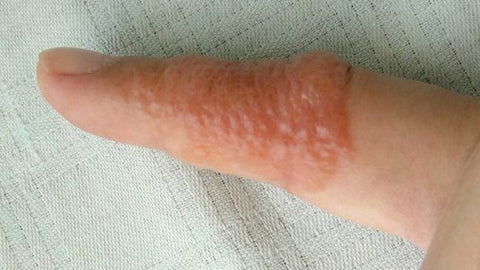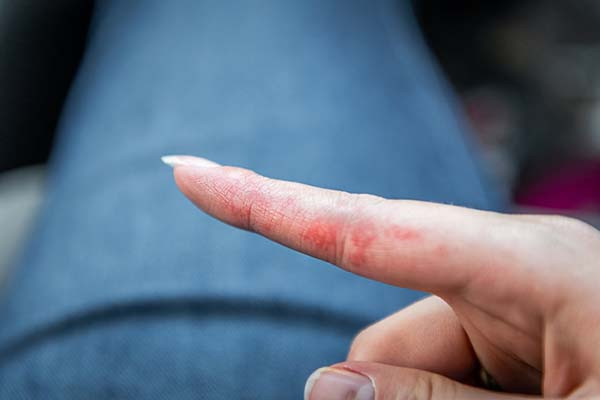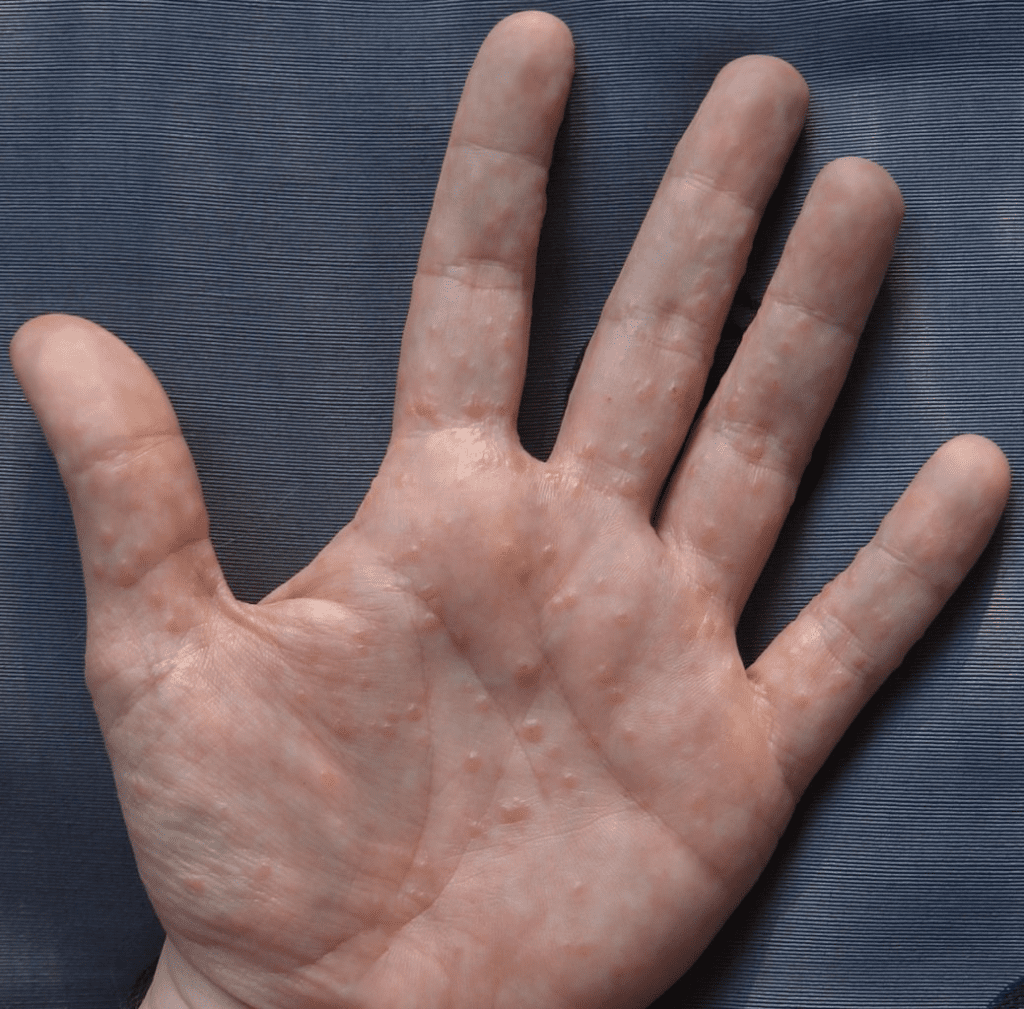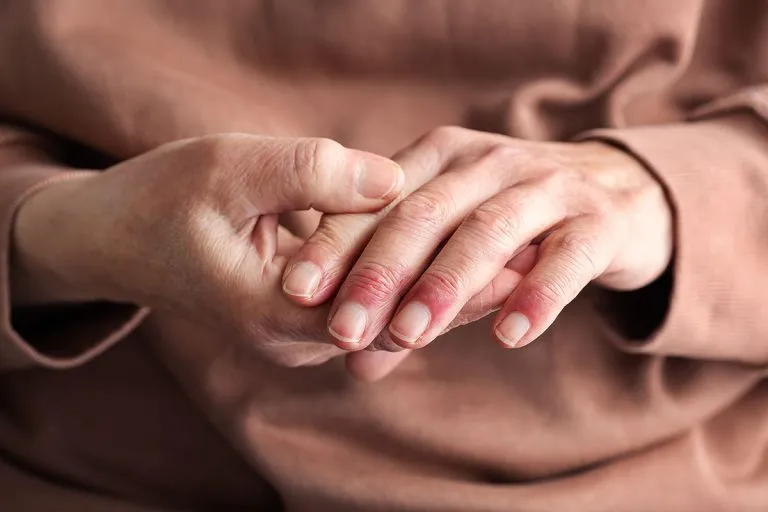Dyshidrotic eczema, also known as pompholyx or palmoplantar eczema, is a skin condition that can be both uncomfortable and frustrating. This article will explore the causes, symptoms, and treatment options for dyshidrotic eczema, helping you better understand this condition and how to manage it.
What is Dyshidrotic Eczema?

Dyshidrotic eczema is characterized by small, itchy blisters that develop on the palms of the hands, sides of the fingers, and the soles of the feet. These blisters can vary in size and often merge to cover larger areas. While they can be a nuisance, they typically last between two to four weeks. The blisters may contain fluid, leading to significant discomfort, especially if they become infected or scratched.
What Causes Dyshidrotic Eczema?
The exact cause of dyshidrotic eczema remains largely unknown. However, several factors can trigger flare-ups. Common triggers include:
- Sweating: Increased moisture can provoke an outbreak.
- Allergies: Sensitivity to metals like nickel or cobalt, as well as certain ingredients in soaps and lotions, can cause reactions.
- Stress: Emotional stress is a known trigger for many skin conditions, including dyshidrotic eczema.
- Environmental Factors: Changes in weather, particularly humidity, can impact flare-ups.
- Health Conditions: A history of asthma or allergies may increase your risk.
Who is at Risk?
Certain individuals are more prone to developing dyshidrotic eczema. Risk factors include:
- Genetics: A family history of eczema or other skin conditions can increase susceptibility.
- Occupation: Those who work with cement, metals, or chemicals may be at higher risk.
- Age: Most cases occur in individuals aged 20 to 40.
- Pre-existing Conditions: People with seasonal allergies, asthma, or skin infections may have a higher likelihood of developing this eczema type.
Recognizing Symptoms of Dyshidrotic Eczema
The symptoms of dyshidrotic eczema can develop suddenly and may include:
- Itchy Blisters: Initially, you may feel a burning or itching sensation, often without visible signs. Soon after, tiny, itchy blisters appear.
- Affected Areas: These blisters primarily form on the palms, fingers, and soles of the feet. They can also spread to the back of the hands and limbs.
- Appearance: Some describe the blisters as resembling tapioca pudding. If the skin becomes infected, blisters may ooze pus and become painful.
Typically, dyshidrotic eczema resolves on its own but can lead to dry, peeling skin as the blisters heal. Dark-skinned individuals may experience hyperpigmentation after a flare-up.
How is Dyshidrotic Eczema Diagnosed?

If you notice persistent itching and inflammation on your hands or feet, it’s wise to consult a doctor or dermatologist. During the diagnosis, your healthcare provider may:
- Examine your skin and ask about your medical history.
- Inquire about any recent changes in products used or exposure to potential allergens.
- Conduct allergy tests or skin biopsies if necessary.
Home Remedies and Treatment Options
For mild cases, several home remedies and treatments can help alleviate symptoms:

- Cool Compresses: Applying a cool compress for 15 minutes multiple times a day can soothe itching.
- Moisturizers: Using barrier repair creams or heavy moisturizers on damp skin can help retain moisture.
- Corticosteroid Creams: Topical corticosteroids can reduce inflammation and promote healing.
- Anti-itch Medications: Over-the-counter antihistamines may help relieve itching.
For those with more severe symptoms, medical treatments may include:
- Prescription Steroid Creams: Stronger corticosteroids may be necessary for persistent flare-ups.
- Immunosuppressive Medications: In some cases, systemic medications may be prescribed to manage symptoms.
- Light Therapy: Phototherapy can be effective, but it requires careful management to avoid skin damage.
Preventing Dyshidrotic Eczema Flare-Ups
While it may not be possible to prevent dyshidrotic eczema entirely, you can take steps to reduce your risk of flare-ups:

- Identify Triggers: Keep a journal to track potential triggers, such as specific foods, stress, or environmental factors.
- Dietary Adjustments: If metal allergies are suspected, consult a doctor about dietary changes to limit nickel and cobalt intake.
- Stress Management: Techniques such as meditation and deep breathing can be beneficial.
- Protective Gear: Wearing gloves when using harsh chemicals or detergents can help protect your skin.
Managing Dyshidrotic Eczema for a Better Quality of Life

Dyshidrotic eczema can significantly impact your daily life, causing discomfort and frustration. Understanding the condition, recognizing the symptoms, and knowing when to seek medical advice are essential steps in managing this skin issue. With the right treatment and preventative measures, you can alleviate symptoms and reduce the frequency of flare-ups. If you suspect you have dyshidrotic eczema, don’t hesitate to reach out to a healthcare professional for guidance tailored to your needs.


